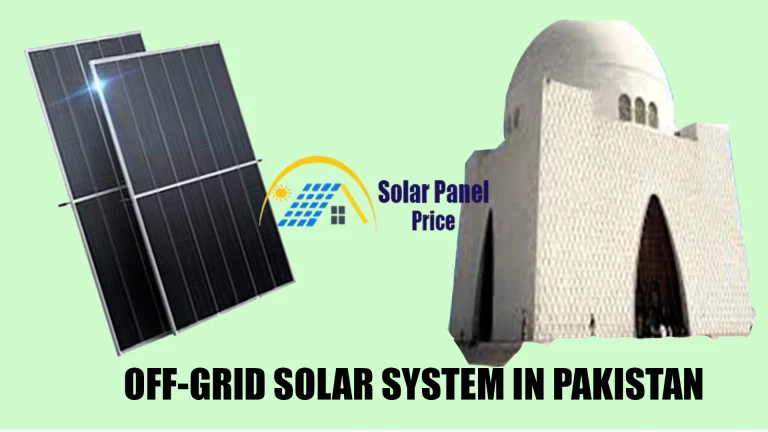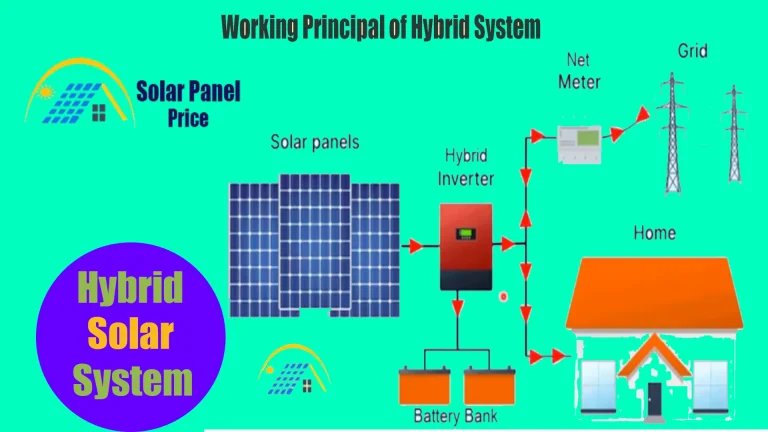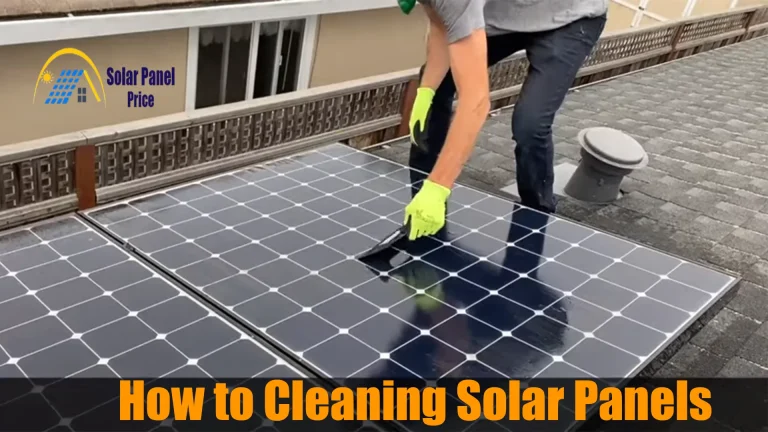On-Grid Solar Systems in Pakistan | Advantages and Cost Analysis
Are you concerned about the daily rising prices of batteries in Pakistan and having no power bank to store electricity. Or are you looking for a solar system without power savings? The energy crisis in Pakistan has made people’s lives challenging. An on-grid solar system may be ideal for you if you are thinking about using energy.
Among the different solar solutions, you can maximize your electricity by starting with an energy-generating grid. Homeowners, businesses, and industries can add batteries to store electricity if they need.
In these systems, completely discussing on-grid solar panels and how they generate electricity and provide power to home and business.
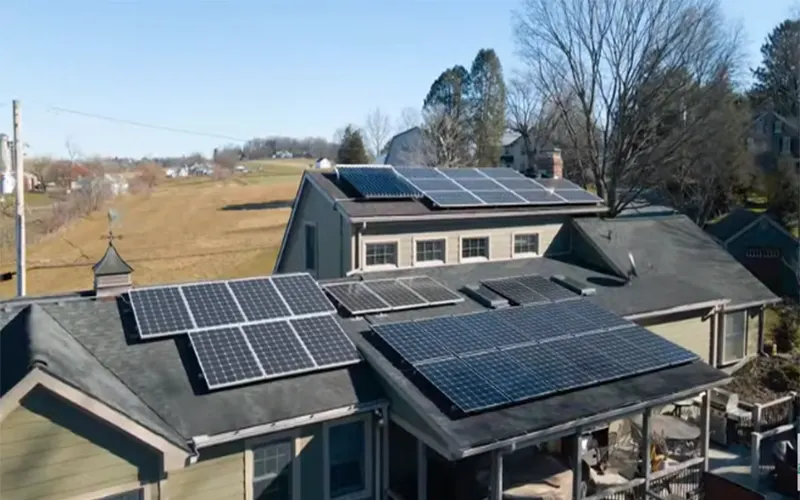
What is an On-Grid system?
On-grid systems connect directly with national power grid stations and reliable power sources. They collect light from the sun and feed extra and unused energy back into the public utility electricity grid through net metering. When solar is not working, like on cloudy days or nights, systems draw from grid stations to continue the energy supply.
How On-Grid System Work
The solar power setup is connected to the local utility grid and includes a solar plate, an inverter, and a net meter. When the solar plate captures sunlight, the sun’s energy goes into the silicon of the solar plate, producing electricity and converting direct current ( DC ). The inverter converts into alternating current (AC) for use in your home or business.
Solar Panels:
The main part of any solar system is solar panels. They capture the sunlight using photovoltaic cells and convert electricity through the Photovoltaic effect.
Inverter:
The main role of an inver converting direct current (DC) electricity into alternating current (AC) electricity. This is used in home appliances.
Net Metering System:
During the day, the system generates extra electricity. The Net Metering System transfers unused energy to the Grid.
Installation Process of On-Grid Solar Systems
On-grid solar installation seems like a hassle; first, understand exposure to sunshine, shade, and roof orientation.
- Install the Panels.
- Electrical wiring
- Connect the solar panels, solar inverter, and batteries properly
- Install the meter and track energy inflow and outflow
- Connect the inverter with the Grid.
You should get advice from an expert for the installation process.
System Design:
The expert designs the on-grid system based on the user’s energy requirement and financial limitations.
Installation:
Qualified experts can install solar panels on frames, inverters, and other components.
On-Grid system Sizing and Considerations
Before sizing an on-grid system, calculate your monthly energy average consumption and household requirements, including location (sunny area), available roof space, and budget.
Key Components of an On-Grid Solar
A key component is an important part of on-grid; spend time to understand each piece of the system and how it supports you in energy generation
- Solar Panels
- Module Mounting Structure
- Wiring and Connectors
- Solar Grid-Tie Inverter
- DC Cables
- DC Disconnect Switch
- AC Disconnect Switch
- Bi-Directional Meters
- Safety Devices
- Balance of System (BoS)
Grid-Tie Solar System in Pakistan
Are you concerned about this solar system? This system is connected directly to the utility grid station. It generates electricity with solar panels and sends extra electricity back to the grid station. This system is best and lower in cost because it does not require any batteries to store electricity.
This is the best solar system and a popular choice of homes in Pakistan to generate their own electricity and save money on electricity bills. These systems are easy to install and maintain. They Convert Sunlight into DC electricity, and an inverter converts it into AC electricity.
This system has many different names, including:
· Grid-connect system
· Grid-connected system
· Grid-intertied system
· Grid-direct system
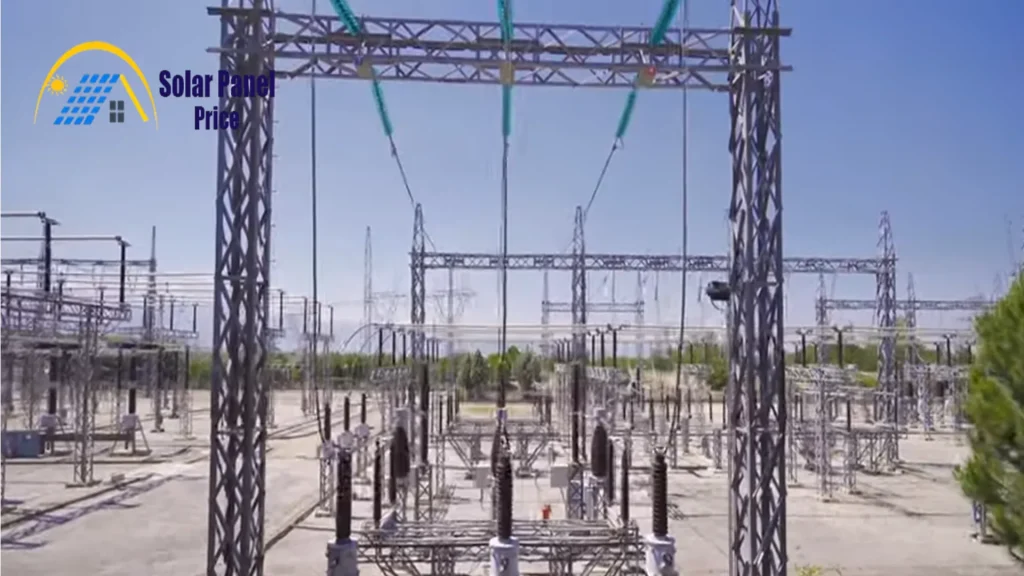
On-Grid Solar Systems Price In Pakistan
The price of this solar system in Pakistan depends on the system’s efficiency, capacity, and type. The solar system and inverter will have higher capacity as well. Depending on the size and characteristics of the system, the price range of the system in Pakistan is PKR 825000 to 925000.
Cost Analysis of On-Grid Solar Systems in Pakistan
If you want to know the cost of an on-grid setup, it depends on factors such as quality, Brand, and system warranty. Here, we focus on the most common components of systems, as mentioned below.
Solar Panels
Solar panels are the primary and general investment in the system. Currently, panel prices have gone down due to more suppliers providing better technology and competing with each other. The Pakistani government imports a large number of panels from China. Panel price in Pakistan depends on quality, size, and Brand.
The cost of installation
In Pakistan, the cost of installing a panel is different. Each company charges different prices for labor and mounting tools. It is best to contact local companies and installers.
Net Metering Charges
Find the local energy company and ask about net metering rules and fees; they properly guide you about the fees of:
- Application Fee
- Meter Installation Fee
- Inspection and Certification
- Interconnection Fee
Inverter
The price range of an inverter In Pakistan is PKR 50000 to PKR 150000, depending on Brand, quality, and energy processing.
This is the second component of the solar system. It changes DC current into AC current, which we use for our home appliances. If attached to the system, it charges your batteries and sells extra energy to WAPDA.
Regulatory Framework for On-Grid Systems in Pakistan
As mentioned below, Pakistan aimed to promote renewable energy and announce various regulatory policies.
Net Metering Policy:
Solar panels generate extra energy during the day. Unused energy is sent into grid stations through net metering, which decreases your electricity bill. Alternatively, in rainy, cloudy, or nighttime, when panels are not producing energy, the grid station will feed energy to your home appliances.
Feed-in Tariff (FiT) Programs:
The fundamental and policy mechanism of the Feed-in Tariff boosts investment in renewable energy in Pakistan. Net metering sells extra electricity generated by solar panels to the Grid, allowing individuals and companies to feed power to the Grid and get paid specified amounts.
Renewable Energy Policy:
Renewable energy has recently grown in Pakistan’s electricity sector; the policy aims to diversify mixed energy sources such as wind, solar, and hydropower.
Advantages of Grid-Tie Solar System
The main advantage of an on-grid system is that it requires no expensive batteries.
- Cost-effective system with lower investment
- It does not require expensive batteries
- Earn credits by sending extra energy to Grid through net metering
- Reduce your electricity bill
- Easy to install and maintain
- Ideal for rural and urban areas with reliable access.
Disadvantages of Grid-Tie Solar System
- Dependence on the Grid for operating
- Without battery backup, automatically shutdown
- Limited space on top roof efficiency compromised
- Cloudy weather and nighttime required grid electricity
Price Analysis of On-Grid Systems in Pakistan
Adopting solar energy is an excellent move toward sustainable living. The price is depending on factors like Brand, quality, and system warranty. We are focusing on the most popular system sizes, 3kW, 5kW, 6kW, and 10kW, which are mentioned below.
Price of 3kW On-Grid Solar System in Pakistan
The cost of 3kW of on-grid is approximately PKR 400000 to PKR 700000. The prices of solar plates, solar inverters, mounting the structure/frame, wiring, and installation charges.
This system required 6 solar plates of 580w for generating 260 to 450 kilowatt-hours of energy monthly, depending on the location where the system was installed and weather conditions.
Price of 5kW On-Grid System in Pakistan
The price of 5kW in Pakistan starts from PKR 500000 to PKR 800000, with solar plate, solar inverter, mounting structure/frame, complete wiring, and installation charges. This system is suitable for medium homes.
This system required 10 Plates of 580w solar panels and generated approximately 500 to 700 kilowatt-hours of electricity per month. It is based on weather conditions and the system location where the system is installed.
Price of 6kW On-Grid System in Pakistan
In Pakistan, the price of 6kW starts from PKR 600000 and PKR 1000000, with the solar plate, solar inverter, mounting structure/frame, complete wiring, and professional installation charges. This is best for larger households and small commercial setups.
It required 12 Plates of 580kW solar panels and generated 600 to 900 kilowatt-hours of electricity monthly. The amount depends totally on the sun’s harness and weather conditions.
Price of 10kW On-Grid Solar System in Pakistan
In Pakistan, the price of 10kW solar panels starts from PKR 1000000 and PKR 1500000, with solar plates, solar inverter, complete wiring, mounting structure/frame, and professional installation charges. This system is best for more significant residential properties or small commercial industries.
The system needs 20 solar plates of 580kW solar panels and produces monthly energy of 1500 kilowatt-hours, depending on weather conditions.
Disclaimer: Please note these prices depend on different factors, such as Solar brand, solar quality, solar warranty, taxes and service installer charges. Before installing the system, you must visit your local markets to confirm the prices accurately.
Benefits of On-Grid solar System in Pakistan
The system offers the most advantages for homes, businesses, and industries. It is low-cost due to fewer components. Solar systems have long-term financial and environmental benefits for household coverage of PV system costs.
Cost Savings:
The most important reason for cost saving in the system is that users reduce electricity bills while connected to the Grid, use less energy from the Grid, and sell extra energy with net metering. Sometimes, customers receive payment if they generate more energy and send it to the Grid.
Return on Investment (ROI)
Net metering sends user credits for excess electricity into the Grid.
Environmental Impact:
Solar user contribute to the environment using solar panels for energy generation. Users can reduce gas emissions from fossil fuels.

What makes on-grid systems different from hybrid systems?
An on-grid-connected system depends on the local Grid for energy, which means the solar system is unable to provide power on its own. This makes it unsuitable for areas where blackouts are frequent.
The hybrid solar system works even during cloudy weather conditions, works on battery storage, and provides electricity to the system.
Differences between on-grid and off-grid solar systems
| Features | On-Grid Solar System | Off-Grid Solar System |
|---|---|---|
| Connect with utility Grid | Yes | No |
| Power Bank / Battery Storage | Not Required | Required |
| During the power outage can generate electricity | Yes | Yes , if battery fully charged |
| Cost | Low | High |
| Complexity | Less Complex | High Complex |
| System Maintenance | Less maintenance require | More maintenance require |
| Self-consumption | During the day | During the day and night |
| Roof Space Require | Less | More |
| Sent extra power to grid | Yes | No |
On-Grid System in Pakistan: Wrapping Up
This is the best opportunity for users, as it can reduce electricity bills and contribute to a greener environment. On-grid investment is less compared to other types.
Is the Grid-Tie Solar System In Pakistan Worth it?
Everybody knows about the electrical situation in Pakistan nowadays. On-grid systems have worth in these conditions.
Conclusion
The on-grid solar system is a viable option for those wishing to reduce electricity costs. Sell excess electricity to the Grid and save money on your electric bills. This system is best for home and small commercial setups.

